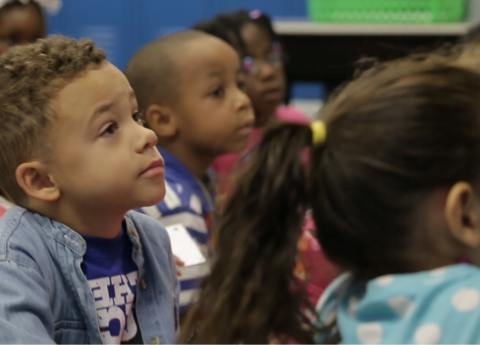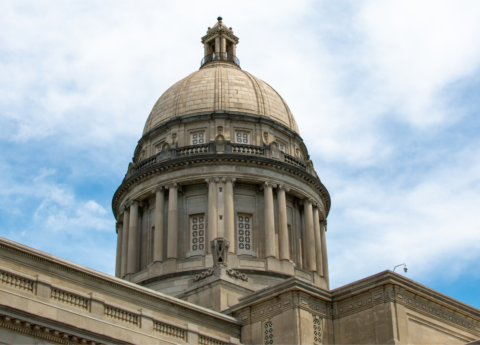Kentucky’s constitution requires the General Assembly to “provide for an efficient system of common schools throughout the state.” The last time the state Supreme Court found Kentucky to be in violation of that mandate, the legislature passed the Kentucky Education Reform Act. By generating significant new tax revenue, KERA funded vast improvements in education and reduced funding disparities between poor and wealthy districts. Kids who’ve grown up under KERA have benefitted greatly from the prioritization of strong public schools – as has our entire commonwealth.
Unfortunately, because we’ve allowed special interests to “dirty up” our tax code with tax breaks since then, state dollars for education have been waning. Deep cumulative state cuts have forced local schools to cut staff, after-school programs and other important investments in students. School districts have tried to mitigate some of harm by raising local taxes to the extent possible, but overall educational progress has been stymied.
This disinvestment in public education is the backdrop against which proposals have been filed to siphon off additional state resources through a tax subsidy for private schools. HB 205 and SB 118 do this by establishing the most generous tax break on the books in Kentucky for contributions made for private school scholarships.
Because our constitution prohibits the direct expenditure of public funds on religious schools — and many private schools are religious schools — these proposals attempt to use the tax code as the vehicle rather than a direct appropriation. But we end up in exactly the same place.
Advocates claim the purpose is to reduce disparities between well-off families and those who cannot afford private school by funding scholarships for kids from low- and middle-income families. But the proposal’s income eligibility threshold is so generous that a full 72 percent of Kentucky kids would be eligible, including for instance, a child in a family of 4 with $95,275 in income – 30 percent higher than median income for a family that size.
And because the proposal does not require scholarship recipients to have previously attended public school, relatively well-off families whose children already attend private school without the state subsidy will be able to benefit.
In addition to the state losing revenue needed for public schools, school districts will lose state resources when students do switch from public to private schools. Though advocates claim public school districts losing state per-pupil funding will offset it through savings on “variable costs,” such students will likely be spread out across schools and grade levels, making proportional reductions in classroom costs very unlikely.
Letting special interests insert yet another tax break into our tax code, and asking local districts to make up the difference, is a habit legislators must break.
Unlike the “fiscal impact statement” advocates have distributed to legislators that claims net savings from the proposal, the official fiscal note from the state Legislative Research Commission (LRC) on a nearly identical proposal from last year found that the proposal would be extremely costly to the commonwealth. In the first year, the tax expenditure is capped at $25 million, but each year that 90 percent of the program is utilized, the cap will grow by 25 percent in the following year. That increase is extremely likely to happen because “donors” can directly transfer public resources to private education at nearly no cost to themselves, and sometimes even to their personal financial gain. The LRC predicted that in just a few short years, the program would already cost the state $50 million. Florida’s program has the same growth provision, and costs have escalated to $874 million in FY 2019.
Why will there most certainly be enough “donations” to trigger program growth? At a 95 to 97 cents return for every dollar donated up to $1 million per donor, the credit is 19 times bigger than the state’s charitable deduction for other kinds of giving. And there’s even a way donors can turn a profit. Donors could make money on the deal, for example, by contributing stocks at their appreciated value thereby avoiding capital gains taxes – on top of the extremely generous state tax credit.
Instead of diverting public dollars to private schools, legislators should redouble their efforts to ensure the success of our public schools, our kids and the future of our commonwealth.
This column ran in the Courier Journal and the Richmond Register on February 11, 2019 and the Northern Kentucky Tribune on February 13, 2019.



